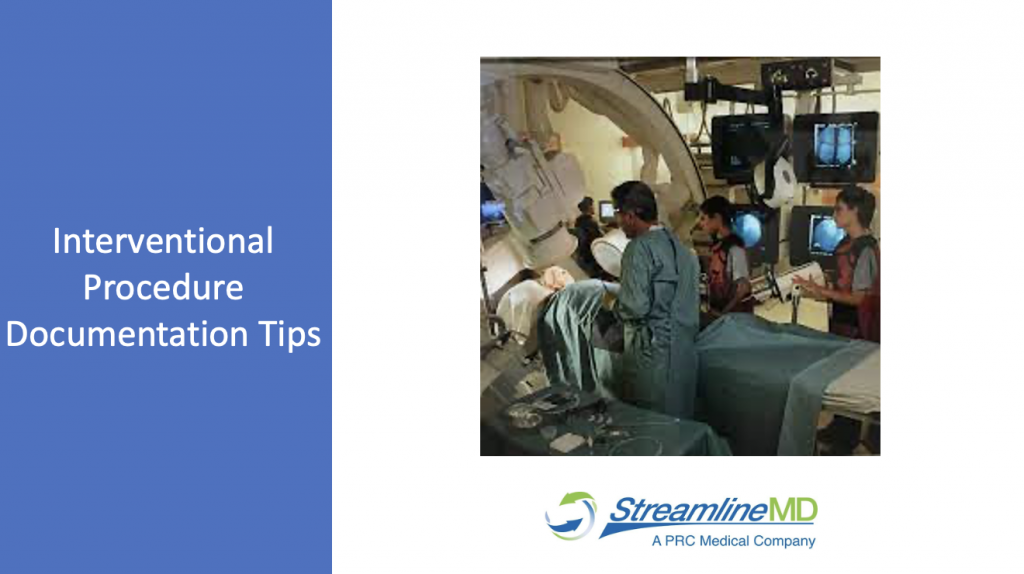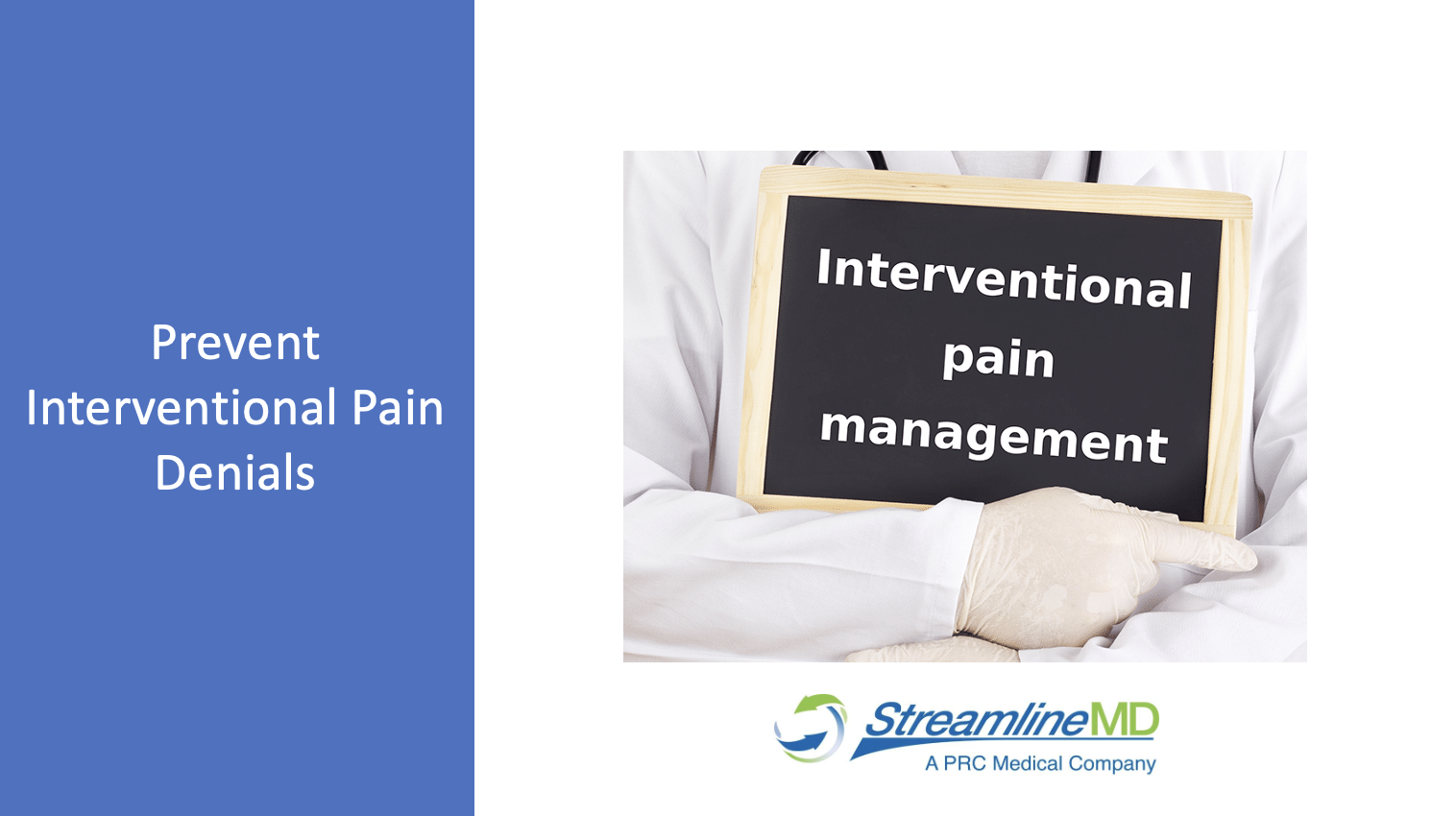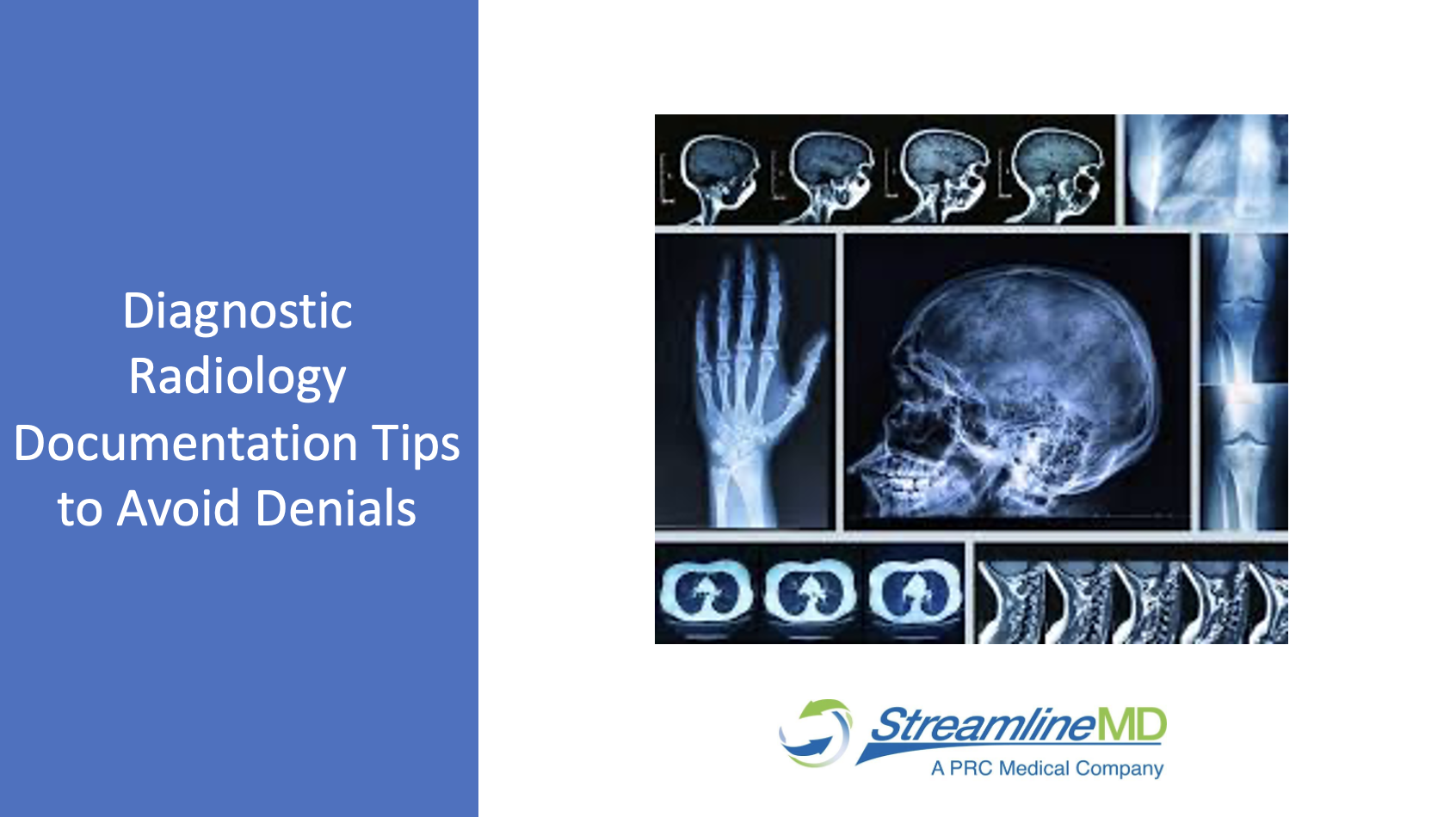Start the year off right by reviewing StreamlineMD’s…
Interventional Procedure Documentation Tips to Prevent Denials and Improve Payments
- Update your report templates/macros.
- Ensure that your documentation is clear and concise, and consistent with CPT 2024 code language.
Why Insurance Carriers Deny Claims:
Insurance carriers’ business model is to collect premiums quickly and pay out claims slowly. Insurance carriers’ revenue is generated by holding onto premiums as long as possible and investing this money to get returns that translate to revenue.
Denying claims, especially those that are high dollar, is an easy way for insurance carriers to slow down claim payment, or to not pay claims at all. In fact, insurance carriers actively use internal algorithms and AI to automate claims denials.
How Coders and Billers Respond to Claim Denials:
Claims are denied for various reasons. Some common reasons include lack of medical necessity, lack of prior authorization, and procedure bundling. This article’s focus is mainly on denials due to lack of medical necessity.
Your coding and billing team must watch for claims denials, review them quickly, gather necessary supporting documentation including the provider’s documentation, and appeal these denied claims for payment.
How to Prevent Claim Denials and Improve Payments:
Remember that your documentation is reviewed by multiple stakeholders: referring physicians, insurance carriers, coders, and billers.
Your documentation is typically the key ingredient to preventing, and successfully appealing, denied claims.
Your documentation must clearly state what was performed and why. It does no good to appeal denied claims with faulty or substandard documentation.
When documentation is at its best, insurance carriers have fewer reasons to deny and stall payment.
Documentation best practices can decrease denials and increase payment turnaround times, which is more important than ever due to latest CMS payment reductions in 2024.
Top 5 Reasons for Interventional Claim Denials:
The following are five areas ripe for Interventional Procedure denials, with easy solutions for improvement.
Intravascular Ultrasound/IVUS, CPTs 37252 & 37253
Carriers look for documentation of % of stenosis or vessel size measurement pre & post intervention in reports. When multiple IVUS codes are billed, insurance carriers review records for distinct language of separate lesions. When not clear, insurance carriers typically assume these are performed via “pullback” method which does not count as selective vessel catheterization.
Recommendation: Intravascular ultrasound was used, {pullback or selective catheter evaluation of X vessel(s) with { X}% stenosis or {vessel measurement}….”
Bridging Lesions
When not clearly documented as separate lesions, e.g., extending into another contiguous vessel or vascular territory, only one code for IVUS, PTA, stent, etc., is assigned. For optimal documentation and coding, be sure to clarify whether one large bridging lesion or separate lesions. When separate lesions are documented appropriately, multiple codes apply.
Recommendation: “The lesion extended from {vessel} to {vessel} was stented with {…} OR “Separate lesions in {each vessel} had stent placed}” describe stent deployment.
Vascular US Guidance, CPT 76937
Documentation requirements include US evaluation of potential sites, selected vessel patency, concurrent realtime US visualization of vascular needle entry with saved images.
Recommendation: “Local anesthesia was administered. Ultrasound access with {permanent image stored/Ultrasound access without permanent image stored} of needle entry.
A sheath {size and type} was placed. Vessel accessed: {Right/Left common femoral artery/radial/brachial artery}. Access technique: Micropuncture set with {XX-gauge needle}.”
Moderate Sedation, CPTs 99152 & 99153
These codes are billed from intraservice time. The physician must be present at the time of first administration push. Time is calculated from face-to-face time which is intraservice. Pre and post service works are not part of the time calculation.
Recommendation: “Performing physician was personally responsible for administration of sedation during the procedure performed. The patient was continuously monitored during the procedure by an independent trained {nurse/observer}, using automated blood pressure EKG and pulse oximetry measurements; The procedure intraservice time was {XX} minutes.”
Diagnostic Angiography with Therapeutic Treatment
To apply CPT codes that include angiography, documentation for diagnostic angiography during therapeutic treatment must meet one of the following statements of medical necessity to bill & receive separate reimbursement.
Recommendation:
- Diagnostic angiography of {vessel name} was performed due to no prior study available. Decision to treat was based on findings of {…}.
- Diagnostic angiography of {vessel name} was performed, due to change in patient’s condition. Decision to treat was based on findings {…}.
- Diagnostic angiography of {vessel name} was performed due to inadequate visualization of anatomy. Decision to treat was based on findings {…}.
- Diagnostic angiography of {vessel name} was performed due to {clinical change} in patient during procedure. Decision to treat was based on findings {…}.
Conclusion:
- Payers make money by denying claims and slowing and reducing payments.
- Your documentation is the key ingredient to preventing, and successfully appealing, denied claims.
- The provider’s documentation must clearly state what was performed and why.
- Coders and billers are grateful when documentation is clear, specific, and concise on a consistent basis.
- Claim denials will drop and your payments will increase.
References: AMA/CPT, CMS
StreamlineMD provides Revenue Cycle Solutions to Radiology & Interventional Specialists. Our Mission is to Improve Healthcare for All Americans. Our Core Values that guide us on our mission are Service Quality, Teamwork, Accountability, Efficiency, Adaptability, Communication, and Integrity. Learn more about us at streamlineMD.com.




